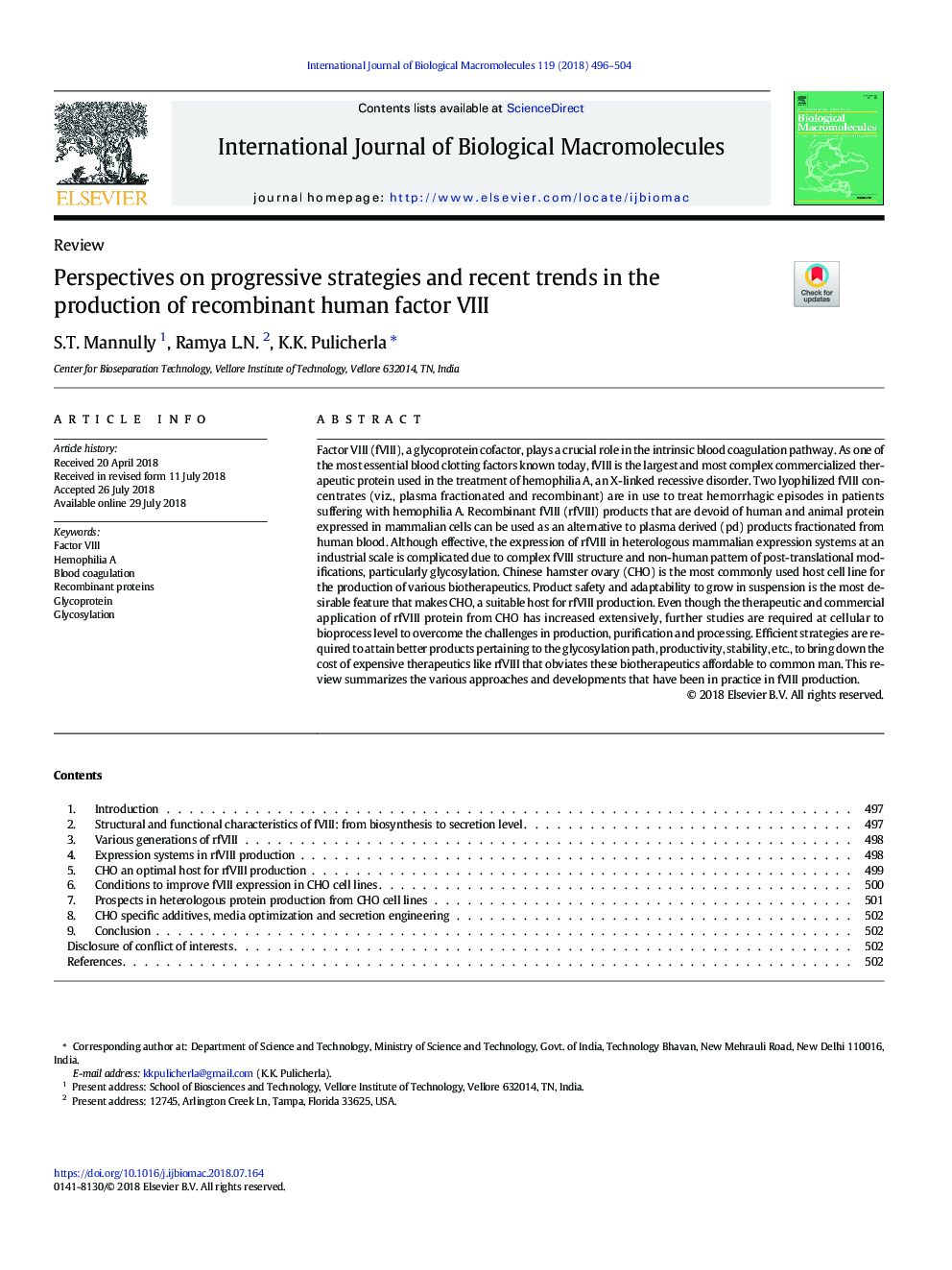| Article ID | Journal | Published Year | Pages | File Type |
|---|---|---|---|---|
| 8326761 | International Journal of Biological Macromolecules | 2018 | 9 Pages |
Abstract
Factor VIII (fVIII), a glycoprotein cofactor, plays a crucial role in the intrinsic blood coagulation pathway. As one of the most essential blood clotting factors known today, fVIII is the largest and most complex commercialized therapeutic protein used in the treatment of hemophilia A, an X-linked recessive disorder. Two lyophilized fVIII concentrates (viz., plasma fractionated and recombinant) are in use to treat hemorrhagic episodes in patients suffering with hemophilia A. Recombinant fVIII (rfVIII) products that are devoid of human and animal protein expressed in mammalian cells can be used as an alternative to plasma derived (pd) products fractionated from human blood. Although effective, the expression of rfVIII in heterologous mammalian expression systems at an industrial scale is complicated due to complex fVIII structure and non-human pattern of post-translational modifications, particularly glycosylation. Chinese hamster ovary (CHO) is the most commonly used host cell line for the production of various biotherapeutics. Product safety and adaptability to grow in suspension is the most desirable feature that makes CHO, a suitable host for rfVIII production. Even though the therapeutic and commercial application of rfVIII protein from CHO has increased extensively, further studies are required at cellular to bioprocess level to overcome the challenges in production, purification and processing. Efficient strategies are required to attain better products pertaining to the glycosylation path, productivity, stability, etc., to bring down the cost of expensive therapeutics like rfVIII that obviates these biotherapeutics affordable to common man. This review summarizes the various approaches and developments that have been in practice in fVIII production.
Related Topics
Life Sciences
Biochemistry, Genetics and Molecular Biology
Biochemistry
Authors
S.T. Mannully, Ramya L.N., K.K. Pulicherla,
